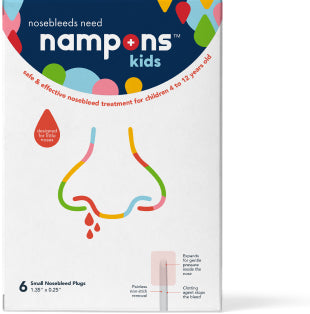You've been through the hassle of packing and preparing—remembering to take lots of clean underwear and medications. You've worried about COVID regulations, carry-on liquids, and passport controls, and you've been through the ever-growing number of security checkpoints.
But just as you settle down on the plane for several hours of high-altitude monotony, your nose opens and a crimson torrent gushes forth, coating you and the in-flight magazine in snotty blood.
Just your luck!
Nosebleeds are common and mostly harmless, but they can also come at inconvenient times, and this is one of the most inconvenient of all.
Is It Normal To Get A Nosebleed On A Plane?
If you get a lot of nosebleeds when you're on level ground, there's a good chance you'll get them when you're 35,000 feet in the air. But it's not just bad timing, as there are a couple of reasons that flying could actually trigger your nosebleed.
Stress, Sleeplessness, and Anxiety
Are you a happy flyer or a stressed one? Do you take a short taxi to the airport, hop on a plane, and snooze for the journey, or do you pack for the whole family, drive for several hours, and then try and drag screaming kids through passport control?
If it's the latter, there's a good chance that your nosebleeds are caused by stress.
Nosebleeds are more common when you're stressed. This is partly down to an increase in blood pressure, but it also relates to your habits.
Many people adopt little quirks when they are stressed, such as pulling their hair, rubbing their faces, tapping their feet, and scratching their arms and legs. For some, those quirks include nose-picking, which is one of the main causes of nosebleeds.
You might not even realize you're doing it.
Even if you're not picking your nose more than you usually would, the fact that you're stressed means you might be doing it quickly or with less care. The blood vessels in your nose are delicate, and a little nick is all it takes for them to rupture and bleed.
Dry Air
Dry air is one of the biggest risk factors for nosebleeds.
Your nasal membrane is very delicate and if the skin dries and cracks, it will expose the blood vessels and could lead to a rupture.
The air in an airplane is extremely dry and typically operates at 20% humidity. For comparison, the average home is between 2x and 4x more humid. If you suffer from nosebleeds resulting from dry air at home, there's a high chance you'll have the same issue in the skies.
Cabin Pressure
Commercial airplanes fly as high as 38,000 feet. The air is very thin up there, so planes use pressurized cabins to ensure passengers get sufficient oxygen throughout their flight.
This pressurization is essential to ensure a safe flight, but it can also cause the blood vessels in your nasal passages to swell. When this happens, they are more prone to rupturing, causing a nosebleed.
How Do You Stop Your Nose From Bleeding When Flying?
To stop your nose bleeding at altitude, keep the following in mind.
Use a Saline Spray or Petroleum Jelly
A saline spray will introduce some much-needed moisture to your nose, protecting against the damage caused by dryness.
Be wary of decongestant nasal sprays as they may exacerbate the issue by irritating your nose. A simple saline solution is all you need—it’s about hydrating and not medicating.
A dab of petroleum jelly could be just as effective, creating a moisture barrier that prevents your delicate nasal lining from drying out.
Stay Hydrated
Drink plenty of water and refrain from consuming too much alcohol and diuretics. Dehydration could increase your risk of developing a nosebleed by drying out your nose.
Wear a Surgical Mask
As of mid-2022, masks are no longer required on flights in the United States. However, they are still required by many international carriers. Even if they are not compulsory, you can still choose to wear one, and if you want to prevent a nosebleed, it could be a good idea.
A face mask will help to keep your nose hydrated by capturing the moisture from your breath. It's not the most comfortable or convenient way to beat nosebleeds, but it'll also protect you against airborne infections, so it's a double-whammy.
Don't Pick or Blow
Refrain from nose-picking or nose-blowing. It will irritate your nasal lining and could rupture the blood vessels.
If your nose is running as a result of a cold, sinus infection, or environmental factors, just dab it with a tissue.
Take Nampons and Tissues
Frequent flyers and nose-bleeders should pick up a pack of Nampons before they fly. These handy little nose packers absorb blood from a nosebleed and contain a clotting agent that halts the blood flow.
A few tissues will help to wipe away any dripping blood and ensure you're not forced to run for the toilet, call for the flight attendant, or make a mess of your clothing.
How Do You Stop A Nosebleed At High Altitude?
If you suffer from a nosebleed on a plane, simply pinch the soft part of your nose, stay seated, and lean forward slightly. Maintain that position for at least 10 minutes and refrain from removing your fingers to check if the bleeding has stopped.
While doing this, you can call for the flight attendant to ask for tissues and general assistance.
Although it's easier said than done, it's important not to panic, as that could make the situation worse.
Conclusion: Nosebleeds and Planes
A dry nose, high blood pressure, nose-picking, sinus infections, and a host of other ailments can increase your risk of getting a nosebleed on a plane.
If you have any of these issues, make sure you're prepared for your flight. Keep your nose moist, pack some Nampons, and if there are face mask rules in place, use them to your advantage!



